Best ERP Software
The best ERP Software for any business is one that is fully customized (or customizable) to its business processes, meets its unique business needs by allowing for features and functionalities which are not part of its standard offering to be built into it, helps automate routine, rule-based tasks and workflows, integrates well with other software applications through APIs and Webhooks, comes at an affordable price and gives you the option of hosting it On-Premise or on Cloud.
The above answer actually summarizes what characteristics you should look for in any prospective ERP solution for your business.
- Customizability- Be customizable to the organization's unique business processes and needs
- Extendibility- Allow for new features and functions to be built into it if customization doesn't meet those needs
- Automatability- Help automate all those tasks and workflows which are routine and rule-based in nature
- Integrability- Integration with other software applications the organization may be using
- Cloud-hosting- Be hosted on the cloud with option to host on-premise
- Cost- Cost should be affordable
Now, that's quite a mouthful and loaded with technical jargon, we know. But the truth is this is the shortest we can get. Like most questions in "What is the best..." series [e.g. try helping me with the following- what is the best vehicle for my business? 😀], 'what is the best ERP' depends on many factors but relax, we're going to de-jargonize and elaborate on each of these aspects you should consider before choosing an ERP Software for your company.
Let's start with the most basic question- what is an ERP?
What is an ERP?
ERP is an acronym for Enterprise Resource Planning.
Now, that's another heavy phrase which you can just ignore and move on with just 'ERP'. But if you're curious, here's the backstory.
Enterprise Resource Planning as an expansion of ERP is a hangover from the past. In its early years, ERPs were made to manage large (in fact, very large- perhaps that's why, 'Enterprise') manufacturing companies. And even in those companies, they were specifically meant to deal with processes involving physical assets (or 'Resource') like inventory (e.g. recording details pertaining to inventory receipt and despatch) and their 'Planning' (e.g. how much inventory is left in stock, how much should be produced / ordered this month). But the business landscape has transformed radically since the nascent days of ERP and a good ERP today is supposed to address the needs of organizations of all size in any industry for managing all their processes. Hence, 'Enterprise Resource Planning' is an outdated term, if not a misnomer.
A more modern and accurate description of ERP is a System for efficiently running and managing the processes of an Organization.
I've deliberately chosen the term 'System' rather than software because System is a broader term and is comprised of not just software but other things too (e.g. hardware, communication bandwidth). This is more of a pedantic distinction. In common usage, ERP is interchangeably used for the Software that powers the 'system' and that's understandable because software plays the role of the 'brain' of the system.
Talking of the Software underlying an ERP, there are a few important points to keep in mind though.
- Software need not be just one big mass of Software but it can be (and usually is) many pieces of software or in other words, softwares, if you will. For example, one 'software' for invoicing, another for payroll, yet another for managing warehouses etc.
In many large ERPs (e.g. SAP, Oracle), all softwares related to each functional area of the business are grouped under what is called a Module, e.g. software for managing Payroll processes along with those for employees' Attendance, Appraisal can be grouped under Human Resourse (HR) module. Similarly there are Accounting module, Production module etc.
In the rest of this page, I'll use the following terms synonymously.
- Software(s), Application(s), App(s), Solution(s), Module(s)
- ERP, ERP Software, ERP System, ERP Solution, ERP Software System
- All Softwares need not be purchased from the same vendor. This is more true today than ever before and only gets truer by the day.
- Integration of different applications comprised in an ERP for seamless flow of data between them is essential for the very essence of ERP. Smooth interaction among various components involved in the ERP system more important than
This was one of the chief reasons why all the software comprised in an ERP typically used to come from the same vendor in the olden days. Linking two softwares developed by the same vendor using the same software language was easier than if they were from different vendors using different languages. Interfacing two software was a separate project requiring significant time and effort.
This resulted in ERP being seen more as a product that you buy from someone en bloc (e.g. a car) than a solution you build or get built (e.g. a house). Only, you didn't know you were buying a 'car' because you were told in the marketing pitches it would be customized with leather upholstery and painted with color of your choice.
With the rapid evolution of API (Application Programming Interface: framework and standards governing exchange of data among applications over the internet) and another related concept called Webhooks, the walls between the applications have lowered considerably, if not fallen completely.
This frees you from the constraint of buying all the different modules or applications making up an ERP from the same company. You should still try and keep the number of applications (and their vendors) to a minimum but that should be due to other considerations than compulsion.
What qualities should I look for in choosing the best ERP for my business?
What qualities should I look for in choosing the best ERP for my business?
I had mentioned the qualities or characteristics you should look for in choosing the best ERP above. Now let me elaborate on each of them below.
Customizability
An ERP for any company should be fully customized or customizable to its unique business processes and needs!
This may sound like no-brainer but let me elaborate a bit on why an ERP needs to be customized to be best-suitable for a business.
What is Customizability of ERP Software System
Customizability of ERP Software System simply means you should be able to set up or mould the software according to your unique business needs.
All Software including ERP are designed keeping a group of target audience or user group in mind. Most default features and functionalities in its standard offering are aimed at addressing the most common requirements of this group which are likely to be used by the highest number of members in this group.
However, such standard offering will not meet all the needs of all the members of the target audience all the time. Have you heard of the adage 'you can't fool all the people...'.?
Hence, the software should make enough room for the default settings to be changed, standard features and functionalities to be tweaked, additional features and functionalities to be built into it. In fact, all software do this to some extent or other. You may be familiar with that ubiquitous gear icon in the applications you use in your daily life. Well, when you click on it and change the setting, you're nothing but customizing the application to your own needs.
When we talk of a business software and most particularly, an ERP, the extent of customization you should be able to do is much much more.
Why does an ERP needs to be customized or customizable?
- Your business is unique!

- And so are your business processes because they have evolved organically with your business over time.

- Each of your business process may have its sub-processes, branches and other nuances.
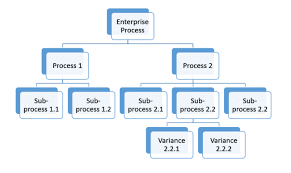
- Each of those processes, sub-processes and branches may have resources, conditions, rules associated with them. Those rules, conditions may have exceptions. Exceptions in turn may have their own resources, conditions and rules.
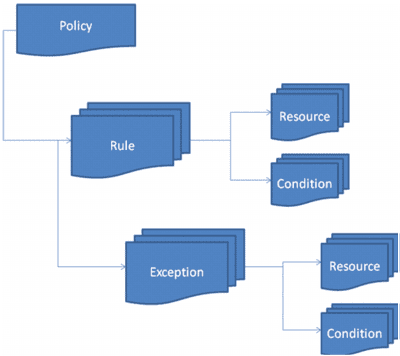
- Then there are checklists and templates (e.g. email templates, invoice templates) relevant to different business processes and sub-processes.
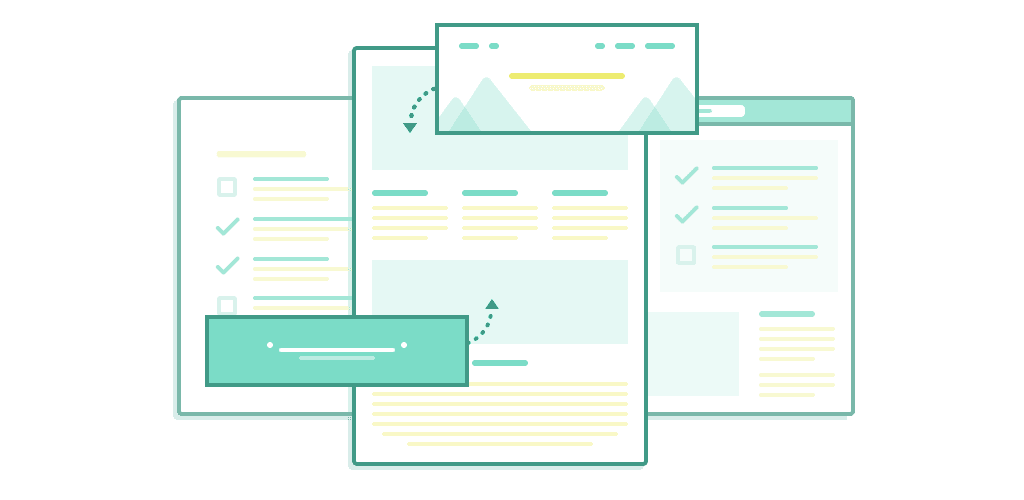
- Such cascading business logic may result in processes and workflows that may be anywhere from simple to very complex.
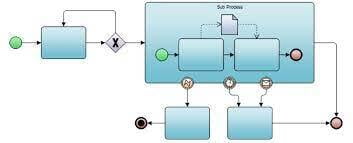
- And there are other software applications your organisation may be using and the way they need to integrate and interact. This is key to making all applications work in tandem as part of an unified system, which is what an ERP is about after all.

- Let's face the bitter truth now. No ERP Software, however expensive it is or tall its claims in marketing pitches, could have ever anticipated all these and built into their offering. Someone may have built an 'ERP' for an 'Animal'. Someone else may have gone little further ahead and built one that can be customized for an 'Elephant' or a 'Zebra'. But what if your business have attributes of both or more, with some characteristics of 'spider', 'apple' and 'moon' thrown in for good measure.

- Although in all fairness, most software application, ERP or not, allow 'some room' for customization, key determinants are how much 'room' and at what cost those customizations can be made.

Automatability or Automation
Any software is meant to, apart from other things, make the job at hand more efficient and the output more error-free, consistent and faster.
An ERP System after all being a software or rather, a body of many pieces of software working in tandem has to meet the above expectations too. Any well-designed ERP software achieves this building in as much automation as possible.
Following are some of the ways in which an ERP Software System achieves automation and wins over a manual processes-
One of the most common examples of automation is to make the data flow from one process or workflow to another without having to re-enter. For example, you have created a purchase order in your ERP of 100 units of a material A at the rate of $1.50 per unit on 1st January 2022 on vendor XYZ. On 1st February, you receive these from the vendor and need to make an entry into the inventory. In a well-designed ERP system, you should not have to re-enter all these details all over again. It should rather be able to search the open purchase orders and select one of them. Once selected, details pertaining to the same should be pre-populated in the goods received record. Some of these should be editable, for example you may not necessarily have received the same quantity as ordered and hence you should be able to edit the same to, say, 75. On the other hand, it should not allow you change particulars like Purchase Order number or the vendor name.
No Duplicate Data Entry
Any well-designed and well-implemented ERP System has to keep this tenet at its heart- there should be no duplicate data entry. In other words, the same should not be required to be entered again.
Once the data is entered into any workflow/ module/ process of the ERP system, it should be 'retrieved' or 'pulled' or 'invoked' whenever required whether by the same workflow/ module/ process or different.
For example, you have created a purchase order in your ERP of 100 units of a material A at the rate of $1.50 per unit on 1st January 2022 on vendor XYZ. On 1st February, you receive these from the vendor and need to make an entry into the inventory. In a good ERP system, you should not have to re-enter all these details all over again. It should rather be able to search the open purchase orders and select one of them. Once selected, details pertaining to the same should be pre-populated in the goods received record. Some of these may be editable. For example you may not necessarily have received the same quantity as ordered and hence you should be able to edit the same to, say, 75. On the other hand, it should not allow you to change particulars like Purchase Order number or the vendor name.
No manual input of what can be derived
Another similar principle of any good software or ERP is it should not require the user to enter what can be derived from data already entered by the user. Continuing with the above example, it should not ask the user to enter the value of the order. That's because it can be calculated by the software [ $150 (i.e. $1.50 x 100) ].
However simple or complicated the underlying logic and calculations, it's the software's job to calculate.
Trigger Actions, Send Notifications, Push Alerts on schedule or pre-defined conditions
An ideal ERP software should be able to carry out routine tasks like sending out emails, push mobile or desktop notifications and perform a whole host of other actions on schedule. As long as the conditions and actions are definable as logic, ERP System should be able to trigger the actions upon conditions being met.
Below are but a handful of examples of automation an ERP System should achieve.
- Email out newsletters to all leads on the tenth of every quarter
- Email out newsletters to all leads when a new edition is uploaded and approved
- Send dunning letter to customers when their invoice become overdue by 15 days and every 30 days thereon if it still remains unpaid
- Push notifications when inventory falls below a certain level or is less than outstanding orders
- Escalate a customer ticket automatically to the Manager after three conversations have happened but it is still unresolved
- Prevent invoice from being generated once the customer has used up their pre-defined credit limit
- Remind the sales executive to update the outcome after every call with the lead
Reports Generation
If you're using a software for, say, lead management, you would also expect it to let you generate reports showing how may leads were received and converted during a specific period by a specific sales person.
Any ERP or Software is expected to facilitate at least some very basic reports. If it doesn't, the very minimum it should let you do is export your data in Excel, CSV formats.
For more advanced and custom analytics though, you may have to depend upon a full-feature Business Intelligence / Data Analytics platform though.
Integrability
You should be able to integrate ERP Software System with other applications your business may be using.
Different modules or applications comprised in an ERP should be tightly knit together, there is no gainsaying that.
However, an ideal ERP or any Software for that matter in today's age should allow for integrations with other 3rd-party applications as well with least time and development efforts. Today, softwares typically facilitate this through APIs and Webhooks. These are web-based standards for exchanging data among different applications. Therefore, you choose all your software carefully keeping this aspect in mind.
Hosting Options- Cloud or On-Premise
What is hosting and what are On-Premise and Cloud hosting options?
Software need hardware to run on. They also need databases to get input from and send output to. Hosting a software is simply the fact of owning the necessary hardware infrastructure to run those software and databases on.
You should have the option of deciding whether-
- you would like to run the softwares and databases comprised in the ERP in your own hardware infrastructure (it's called 'On-premise' hosting in tech lingo) or,
- let them run in the hardware infrastructure of the software vendor itself (called 'On-Cloud' hosting or Cloud-hosted in tech lingo)
or,
- let them run in the hardware infrastructure provided by another vendor, e.g. AWS (also 'On-Cloud' but of a different variant)
Which option should I go for to host my ERP?
Which option should I go for to host my ERP?
Each option has their pros and cons but if you're reading this you're most likely a small or medium business owner/ manager.
For almost all SMBs, Cloud hosting is the best option and in fact, for most of them, it's the only one.
To reiterate, Cloud-based or cloud-hosted means you don't run your software applications and store your data in your own servers but in those owned and managed by 3rd parties.
For example, when you're using Google Sheets, you don't download or install it in your computer but you access and work on it using browser just like you do GMail. It's the Google servers that run these programs (Google Sheets/ Gmail) and store the data. This are just among the most common examples of Cloud hosting.
- You don't have to invest upfront in hardware. You only pay monthly or annually for the hardware resources you plan to use.
- You don't have to hire people to manage the servers and other hardware.
- You don't have to worry about a lot of other support structure required to maintain, upkeep and update the hardware, e.g. physical security, digital security against virus attacks, connectivity and bandwidth, temperature control.
Cost of ERP should be reasonable
And everything has to make sense in terms of the money it costs, doesn't it? And so it should with any ERP you plan to deploy.
So what if its the best ERP customized to every single nook and curve of your organization, whether hosted on cloud or on-premise, if you have to break your bank to implement it?!
A judiciously chosen cloud-based custom ERP on any day will cost less than its on-premise counterparts but among the various cloud-based custom ERP options, you still have to do the evaluation for cost.
The New ERP Paradigm!
- The best ERP for SMBs is which a set of highly customizable building blocks you can pick from and customize to suit your unique business processes, needs, size, complexity and liking.

- Traditionally, ERP conjures up the image of one big unwieldy mass of software built by some gigantic corporation for other gigantic corporations costing millions of dollars and implemented by an army of suit-adorning consultants over months and years. Hence this was (and still is) out of reach of most SMBs.

- But with the way Information Technology, particularly the Web Technologies have evolved, tons of smaller, nimbler and smarter players have been emerging on scene.

- They've been bringing hundreds of domain/ industry/ function-specific applications to the market that are equally smart and nimble, further customizable to an organization's exact needs.

- APIs and Webhooks have become common place and help data flow seamlessly among applications, even if from different vendors.

- With these developments, the traditional notion of ERP stands shattered, with no regrets! The new paradigm for ERP is more liberating, self-paced and business-enabling, particularly for small businesses and medium businesses.
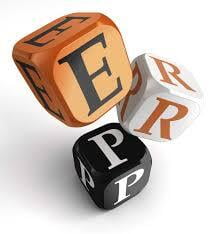
- Gone are the days when you had to buy all those 'building blocks' (e.g. HR, Accounting) from the same vendor, even if some of them either wouldn't be used by you (because you don't need or like them) or used only reluctantly (because you don't like them but can't afford to 'double-buy' something from another vendor even if their offering is better).
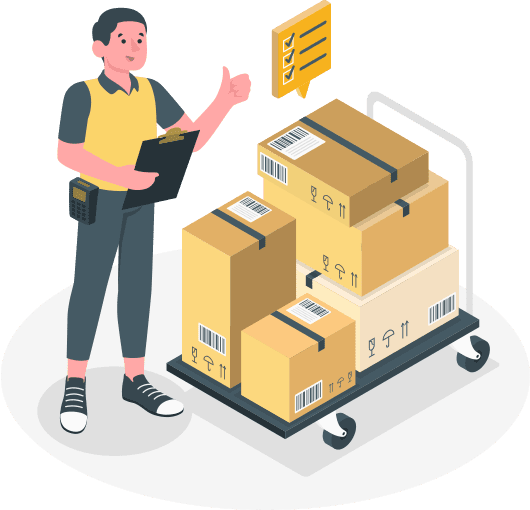
- More often than not, organizations ended up with a white elephant for an ERP and 75% of big ERP implementation projects failed. If you're a SMB, you don't any reason to rue the old regime and every to embrace the new paradigm!

- Today you can have an 'ERP' without buying one. You can piece together your own truly-functional ERP in your own terms by smartly choosing the best-in-class and most cost-effective customizable software ('building blocks') for each aspect of your business all of which need not be bought en masse from the same vendor and seamlessly integrating them, leveraging the power of APIs and Webhooks.
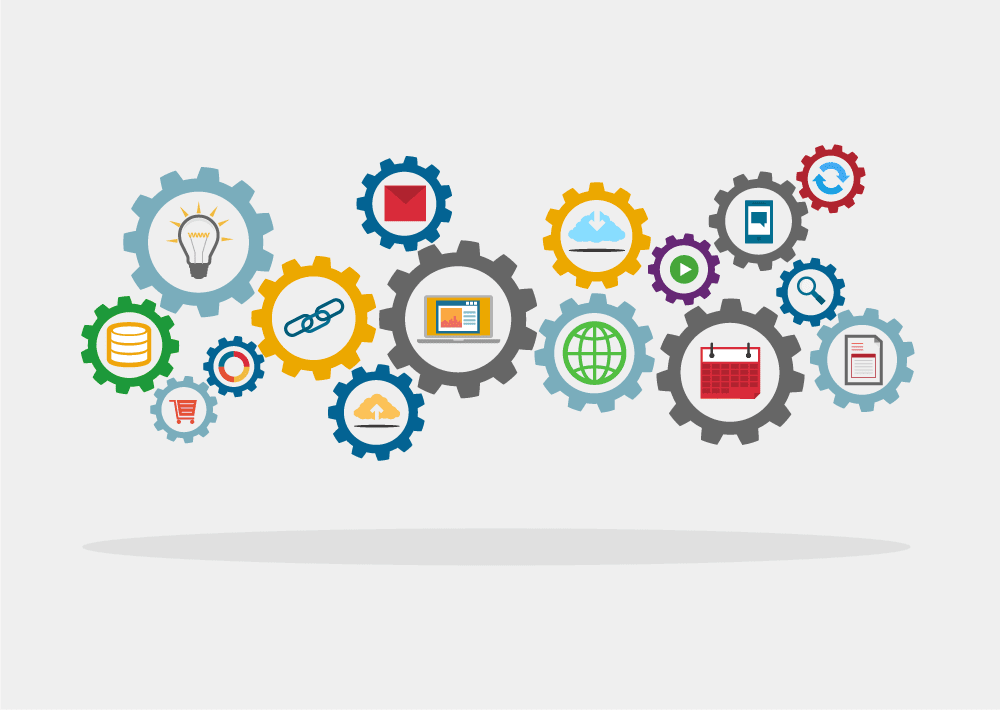
- This ability to cherry-pick, fully customize and glue together individual software applications places enormous power in the hands of Small and Medium Businesses (SMBs) to optimize, standardize, automate and integrate their workflows, resulting in world-class business processes that are at par with or even better than Fortune 500 companies' without burning a hole into their pocket.

